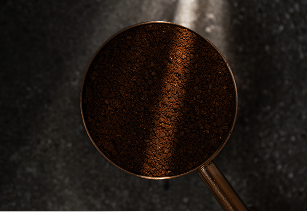Coffee naturally contains several minerals like magnesium, potassium, calcium, vitamins B and E, as well as compounds like melanoidins, and of course, the most well-known compound—caffeine. However, the most important benefit of drinking coffee is its rich supply of antioxidants.
Antioxidants help neutralize harmful molecules called free radicals, reducing oxidative stress and potentially protecting cells from damage.
LET'S LOOK AT SOME ANTIOXIDANTS FOUND IN COFFEE!
Cafestol: Cafestol remains present in coffee beans even after the decaffeination process. Cafestol exhibits potential health benefits such as anti-inflammatory and anticancer properties. It can also help increase insulin secretion and improve insulin sensitivity. (1,2)
Trigonelline: Trigonelline is a compound found in coffee known for its antibacterial properties. It adds to the distinct aroma of coffee. During roasting, trigonelline undergoes degradation, converting partially into nicotinic acid (Vitamin B3). Higher roasting temperatures enhance the production of Vitamin B3, which makes dark-roasted coffee a great choice if you want to increase your Vitamin B levels. (3)
Chlorogenic Acid (CGA): Chlorogenic acid is found abundantly in both green and roasted coffee beans. It acts as a potent antioxidant, has anti-viral properties, and exhibits anti-inflammatory effects in the body. Studies have shown that CGA may also enhance insulin function and potentially regulate fat metabolism, which could be beneficial for managing conditions like diabetes. (4)
Danger Coffee’s remineralization process increases the antioxidant levels in your morning cup. By adding fulvic and humic, it enhances the absorption of the natural vitamins and minerals already present in the coffee, leaving you rehydrated, rejuvenated, and reenergized.
Get the most out of your morning cup with Danger Coffee’s mold-free, remineralized beans!
-----------------------------------
1. https://pubs.acs.org/doi/abs/10.1021/acs.jnatprod.5b00481
2. https://pubs.acs.org/doi/abs/10.1021/acs.jnatprod.7b00395 3. https://www.ncbi.nlm.nih.gov/pmc/articles/PMC10146819/
4. https://www.ncbi.nlm.nih.gov/pmc/articles/PMC9181911/
5. https://www.ncbi.nlm.nih.gov/pmc/articles/PMC6151376/





